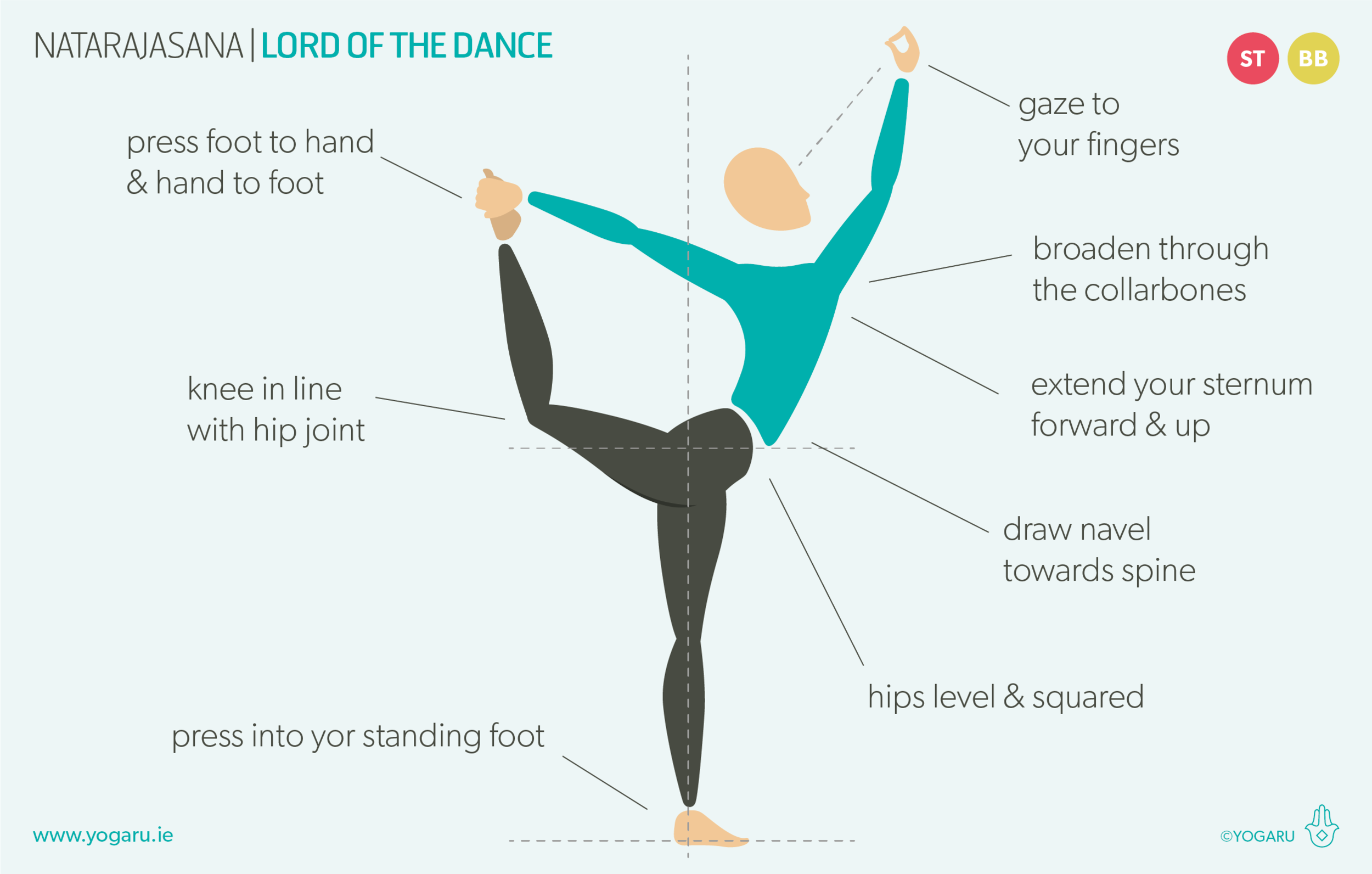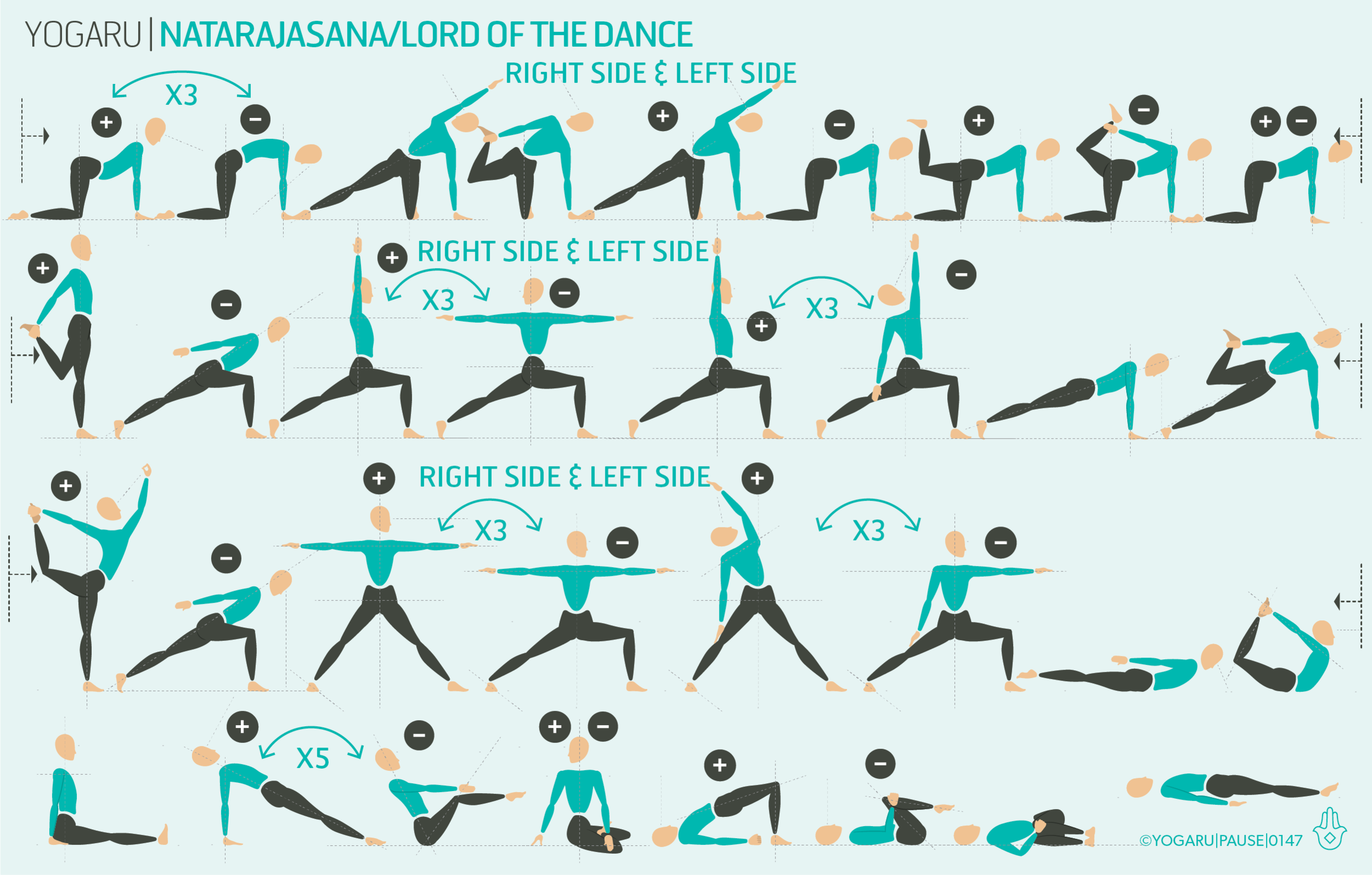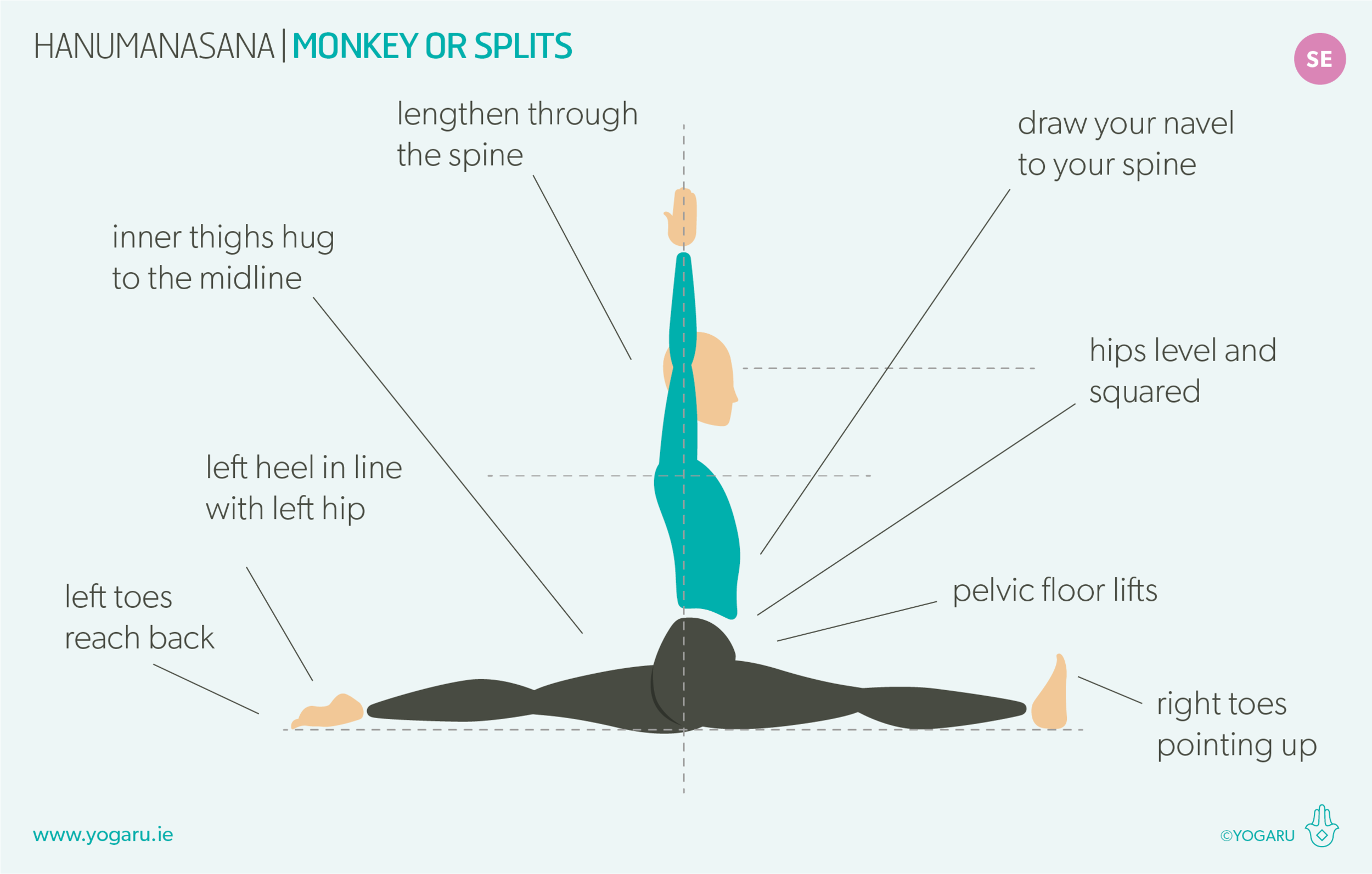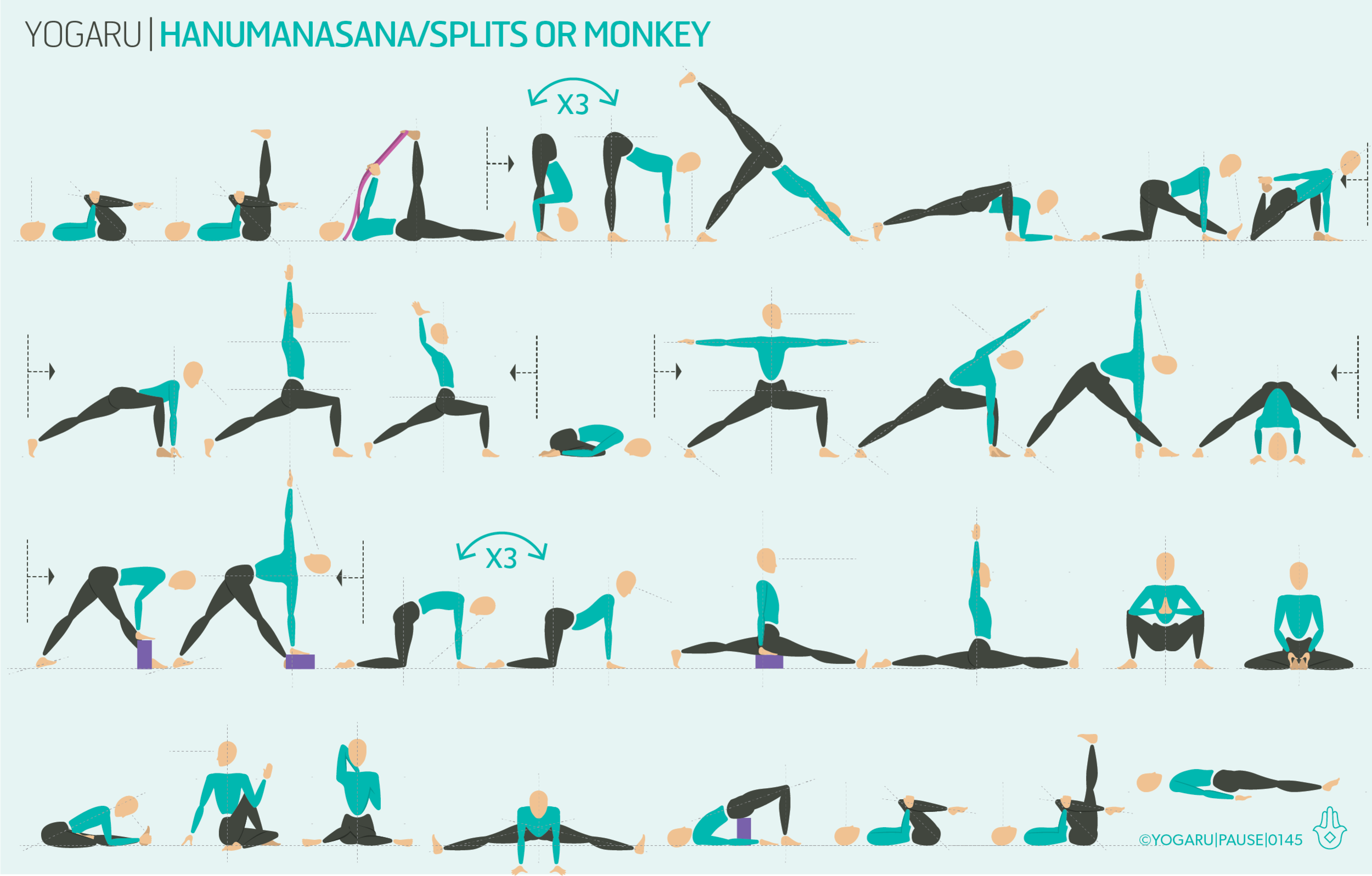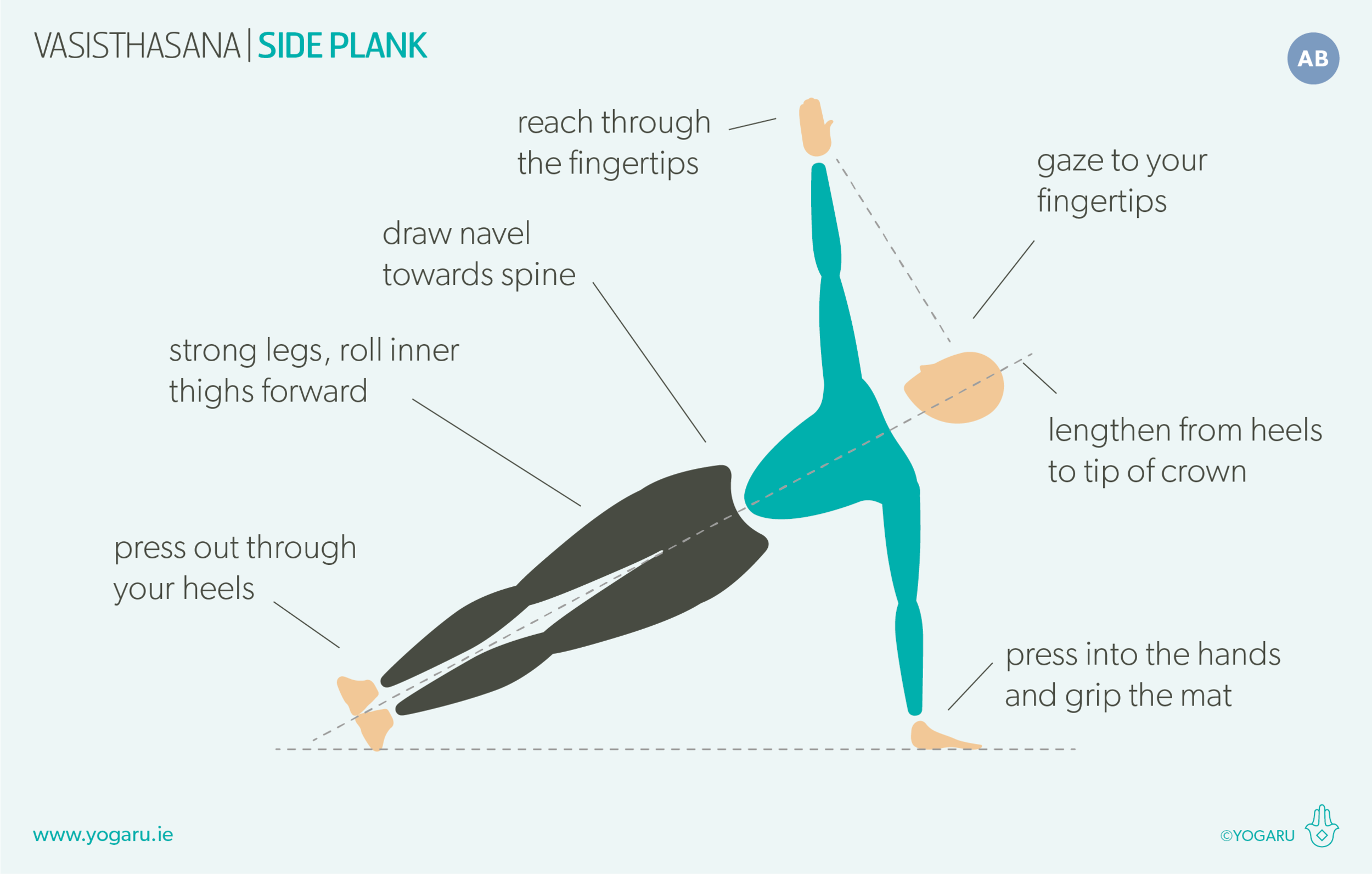FOCUSED STRESS RELIEF
Natarajasana/Lord of the Dance is named after the third god of the Hindu trinity Nataraja who performed a dance to restore the cosmic balance of the universe. Similar to our last pose of the month Hanumanasana/Monkey or Splits it is a hip opener and eases tension in the hip flexors of the lifted leg. A muscle that can get very tight on runners, cyclists and those who sit for extended periods of time. It is also a muscle that can get very tense when you are feeling stressed or anxious. Extending this region of the body sends signals to the brain to release physical and emotional tension and help relieve stress.
The pose also requires focus to stand on one leg which also works as a distraction from a racing mind. The muscular activity of standing, and lifting the leg back, stimulates circulation through the whole body. The combination of the focused effort and increase in circulation is very energising and uplifting. You also get a lovely heart opening stretch through the chest which not only improves shoulder posture but helps to lift your spirits.
THE BENEFITS OF NATARAJASANA/LORD OF THE DANCE
Natarajasana/Lord of the Dance is an advanced balancing pose. It is also a standing backbend pose that requires equal amounts of strength and flexibility. It strengthens the spine and legs; tones the abdominal organs; and stretches the chest, hips and quads of the lifted leg. It is a great pose to add in if you are working with your proprioception and everyday balance. With the leg reaching back you need to focus your attention on finding your centre of gravity.
EXPLORING NATARAJASANA/LORD OF THE DANCE IN YOUR PRACTICE
This sequence kicks straight in with a targeted warm up which will start to open up the hip flexors and prepare the shoulders for arm flexion. The warm up is followed by two standing flows. The first one starts with a quad stretch and will get your standing leg warmed up and ready for your peak pose. It also prepares the back with a gentle extended arm backbend. The second standing flow starts with your peak pose and is followed by a series of Warrior II style flows to enjoy the opening created in the chest area and spine.
The standing sequence ends with two backbends. You can repeat Salabhasana/Locust if Dhanurasana/Bow is not part of your practice. You then transition into your cool down which opens the chest and closes it, twists the spine as a lovely counterpose to the backbend and finally Salabhasana.
ALIGNMENT CUES
You can choose to flow through this sequence and pause in each pose or you can use the breath cues to link the poses and flow with your breath.
Have a read of the tips below and either print out the sequence or save it onto your device:
From Tadasana, hands on hips, inhale, pour your weight into your left foot, bend your right leg back and lift your heel up towards your right buttocks.
Reach your right hand back and hold onto the outside of your right foot, lift your right foot up and back, press your foot into your hand and your hand against your foot, hips level and squared forward, right knee in line with right hip.
Extend your sternum forward and up, broaden through the collarbones, shoulders level.
Reach your left arm up high, press your thumb and forefinger together, gaze to the fingers of your left hand.
To save the images for personal use click and hold down the image until the ‘save image’ option appears; on Mac hold down ‘control’ and click the image to get the option box; on PC right click on the image to get the option box. Scroll down in the ‘option box’ and click ‘save image’.
Ruth Delahunty Yogaru


